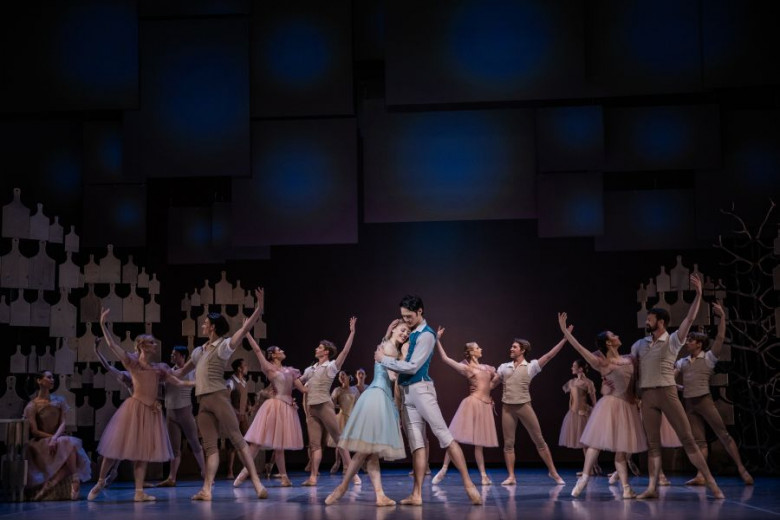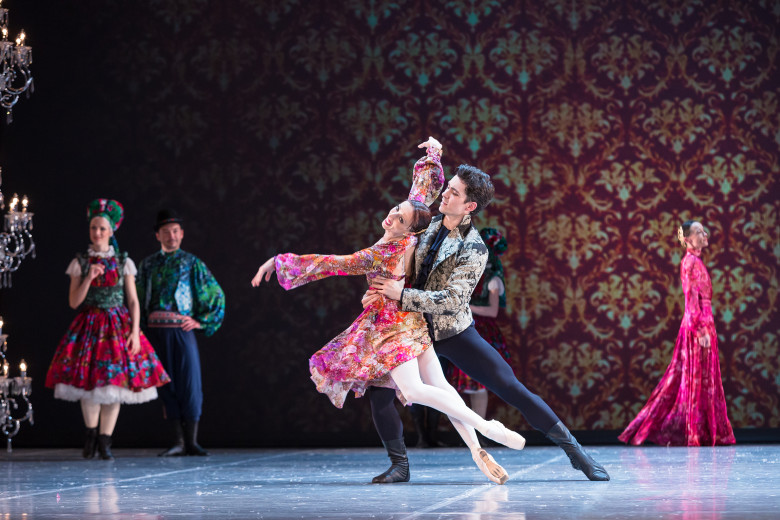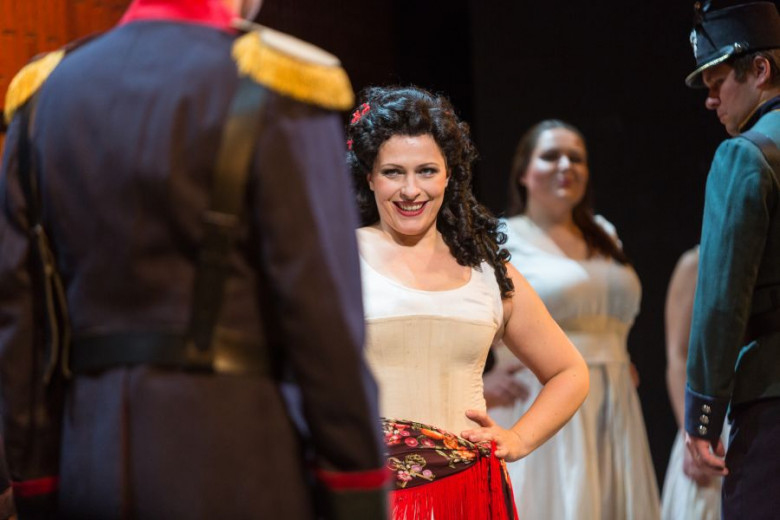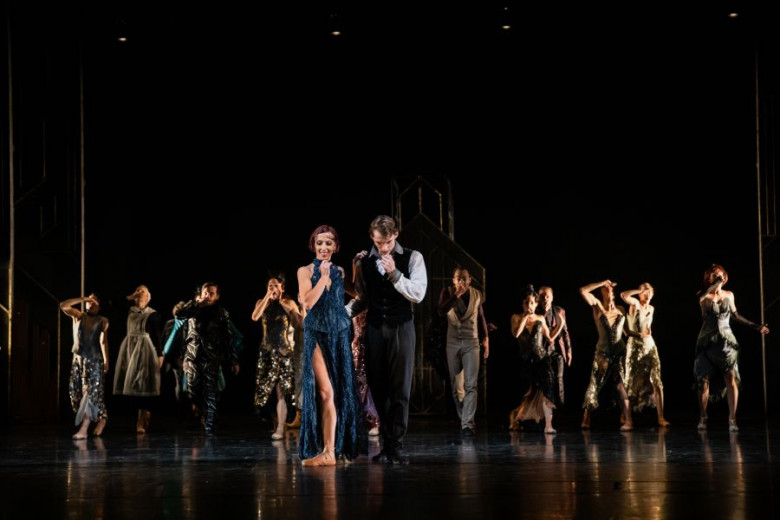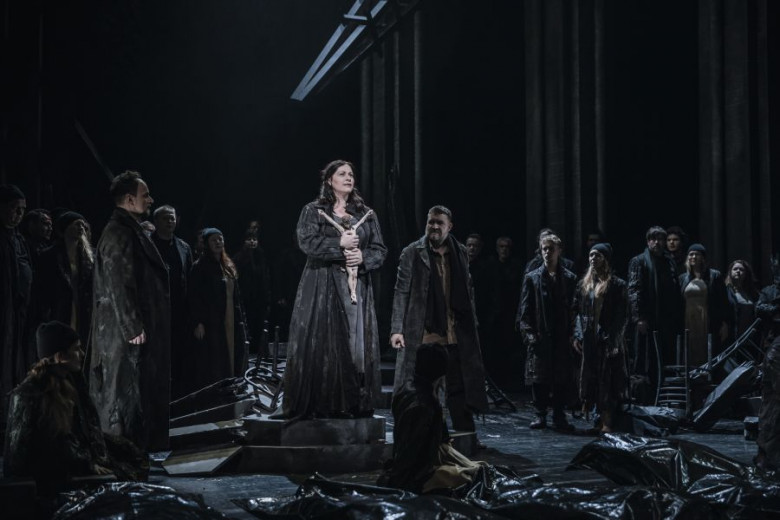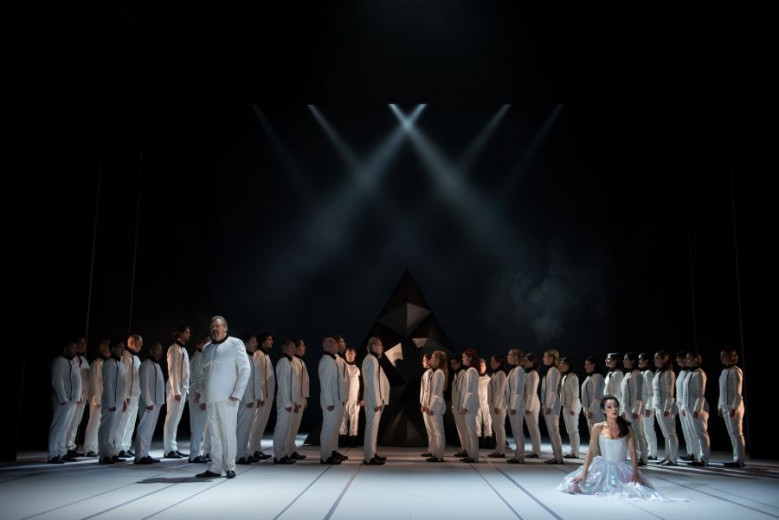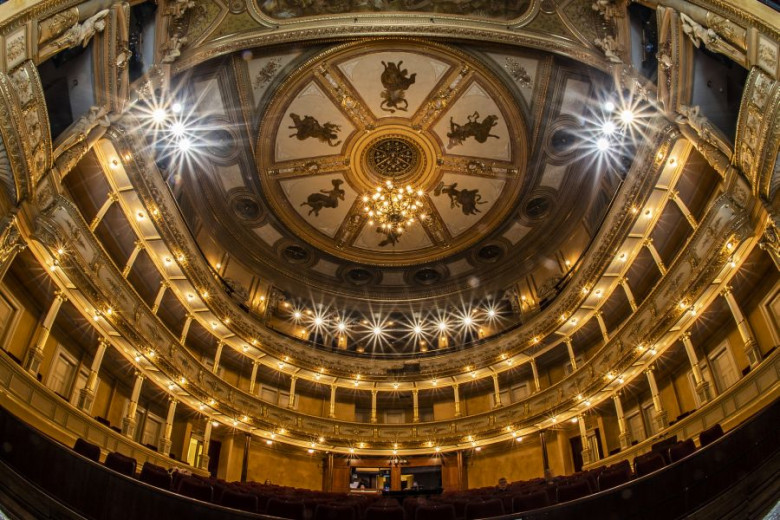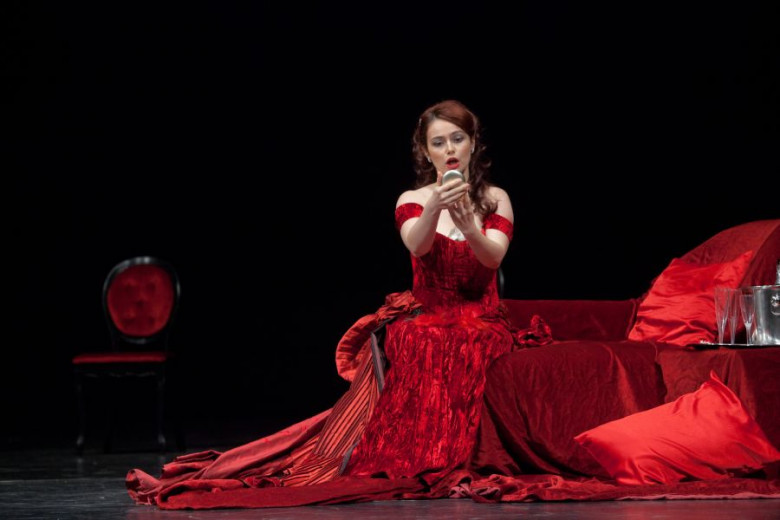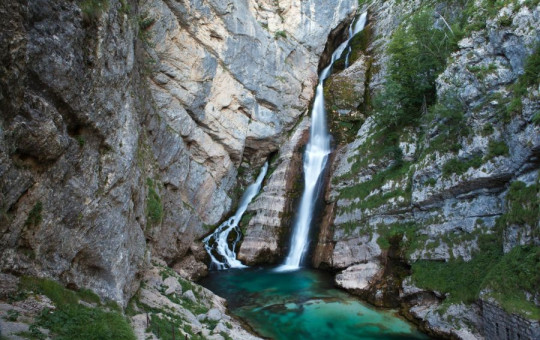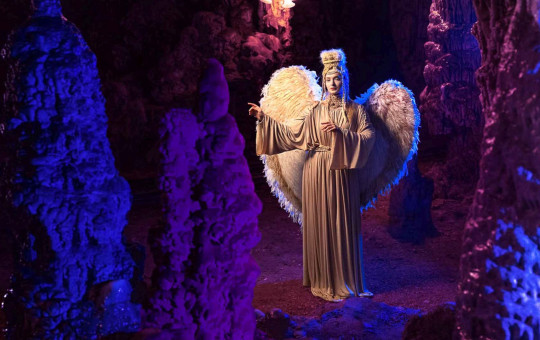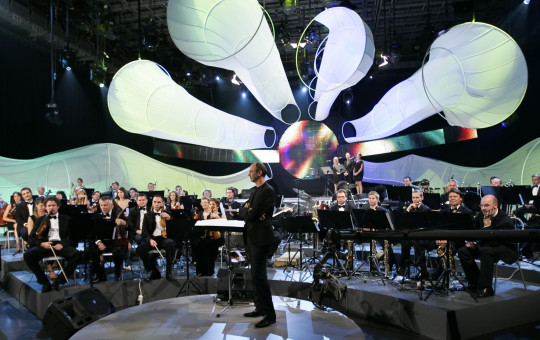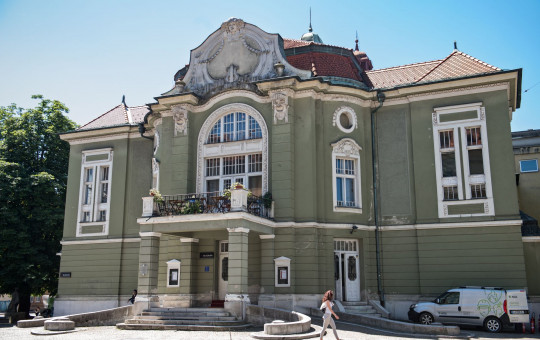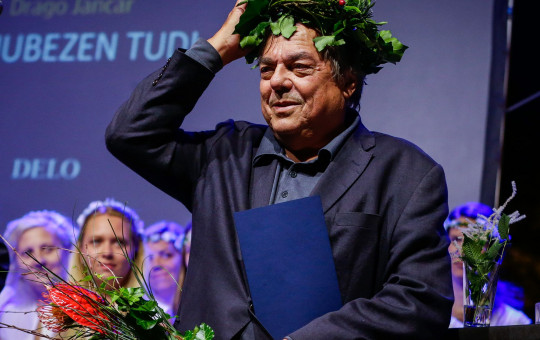The Slovenian National Theatre Opera and Ballet Ljubljana is the most important theatre of its kind in Slovenia. New additions that are made to the programme every season broaden the vast repertoire of operas, ballets and concertos of both contemporary and classical authors that are performed on stages in Slovenia and abroad.
Classical and contemporary opera and ballet performances offering a rich cultural experience
The theatre has been successfully working with various international and Slovenian co-producers for several years, thus producing a number of acclaimed projects (Faust, Aida, The Love for Three Oranges, Don Quixote, Prince Igor, Rusalka, Katya Kabanova and others).
One of the most memorable performances was undoubtedly the world premiere of Offenbach’s newly discovered opera The Rhine Nymphs.
There are 26 permanent soloists in the opera ensemble of the Slovenian National Theatre Opera and Ballet Ljubljana and 44 permanent soloists of the ballet ensemble. The Opera House also has its own orchestra and choir.
A wide repertoire
The Opera House boasts a wide repertoire of contemporary and classical works from the music and theatre world. Six premieres are staged every year, of which there are four opera and two ballet performances. The small stage known as the Third Stage is home to additional topical projects set up in participation with other cultural institutions, such as the Academy of Music and Theatre.
The Slovenian National Theatre Opera and Ballet Ljubljana attracts an increasing number of opera and ballet lovers every year.
Interest in the recreation of classical works and contemporary creations is rapidly growing, in particular with the younger audience. Its performances attracted 82,000 visitors in the past year.
The finest selection of music theatre and dance performances
Apart from preserving Slovenian tradition, language and national identity, the mission of the biggest cultural institution in the country is to acquaint the Slovenian and international public with the greatest music theatre and dance creations and recreations. It systematically encourages the creation of original Slovenian musical works and choreographies.
Its aim is to promote the national Opera House among the general public in order to present it as the only place for the talented and ambitious Slovenian opera singers, ballet dancers and orchestra musicians to develop their creativity.
The institution’s high reputation is enhanced by major tours that the ensembles regularly attend in Slovenia and abroad. With the Katya Kabanova opera they were on tour at the opera in the French city of Rennes, with the Beethoven’s Fidelio in Wrocław, with the Doctor Zhivago ballet in Brno, Sarajevo, Moscow and Saint Petersburg, with Pandur’s Symphony of Sorrowful Songs in South America, with Alexander Ekman’s Cacti in Bonn, with Swan Lake in Trieste and Klagenfurt, and with the Giselle ballet they attended the Mittellfest Festival in Cividale del Friuli.
100 years of the Opera House
It might seem that institutionalised theatre, musical theatre and ballet have a short history in Slovenia compared to other regions of Europe, but this is not the case. The history of the Slovenian National Theatre Opera and Ballet Ljubljana is lively, especially because many years had gone by before it came under the domain of Slovenian artists and creators, the majority of whom later became members of permanent ensembles.
The Ljubljana ballet ensemble, followed soon after by the theatre orchestra, began on its path as a professional institution more than 100 years ago.
When the today’s Opera House was built for the Slovenian Provincial Theatre in 1892, both Slovene and German theatre and opera performances were staged in it. It was as part of the theatre that the Opera House engaged its first permanent conductors, soloists and a choir. While the performances were first accompanied by hired military musicians, the members of the newly founded Slovenian Philharmonics took on in 1908. The performances of the German theatre were moved to the building of today’s Drama Theatre in 1911. The muses in the Ljubljana Opera House fell silent during World War I, when the theatre building became home to the Central cinema. The theatre reopened in the spring of 1918 upon the decision of the theatre consortium to reopen the stage for Slovenian performances in the 1918/19 season. The Slovenian music scene was thus revived in the autumn of the same year and theatre and opera performances were complemented by the ballet spectacles.
-
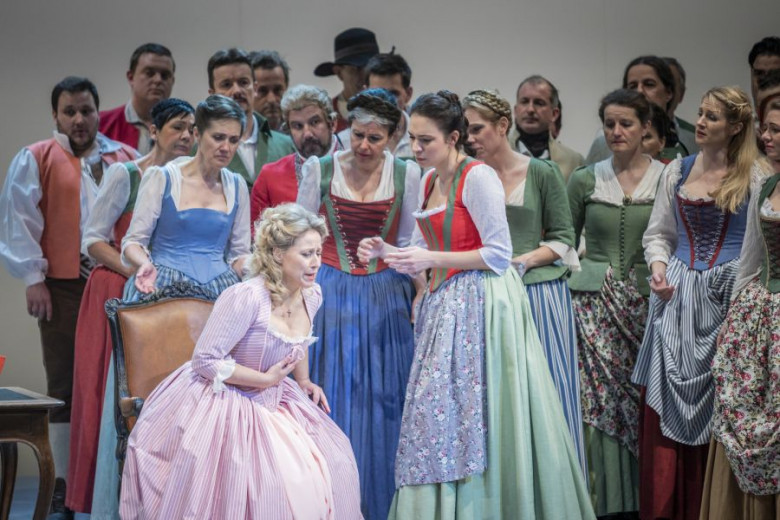
Luisa Miller Opera. Photo: The Slovenian National Theatre Opera and Ballet Ljubljana archive
-
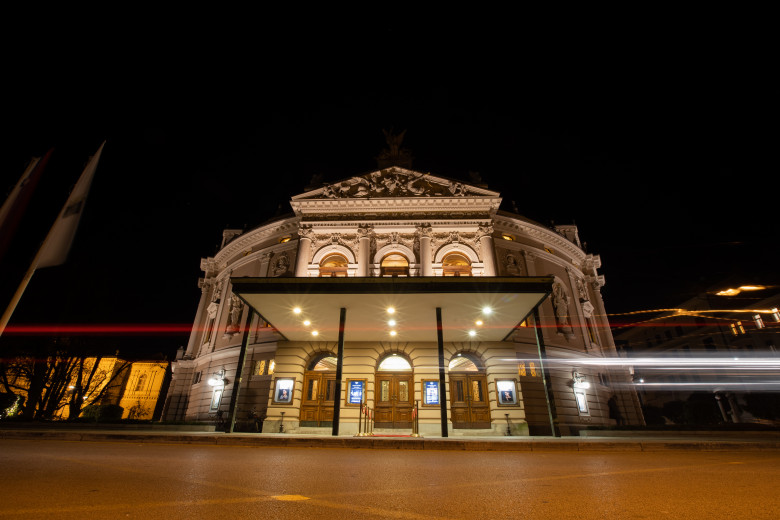
The institution’s high reputation is enhanced by major tours that the ensembles regularly attend in Slovenia and abroad. Photo: The Slovenian National Theatre Opera and Ballet Ljubljana archive
-
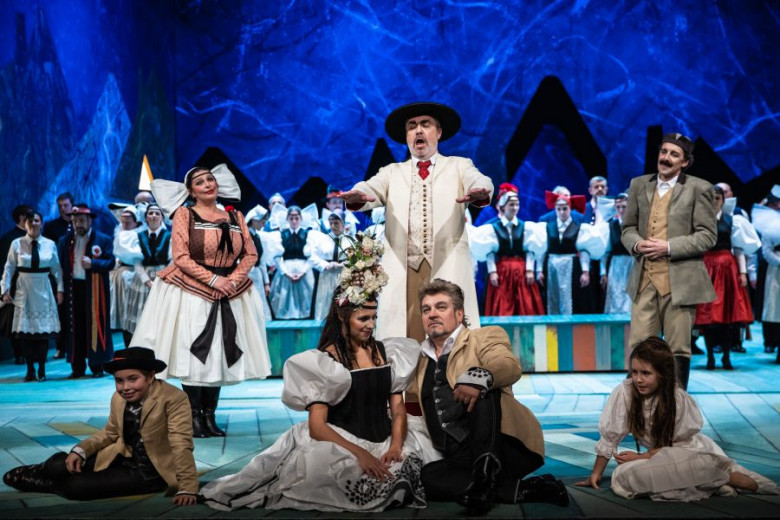
Sold Bride Opera. Photo: The Slovenian National Theatre Opera and Ballet Ljubljana archive
The breakthrough of Slovenian authors
While the Ljubljana Opera House mostly staged French and Italian operas, Slavic and Slovenian operatic works were also given special attention. In the period between the two world wars, the Opera’s repertoire was modernised and several successful operas by the Slovenian composers Kogoj, Osterc and Bravničar were staged. After World War II, the Ljubljana opera ensemble became recognised abroad. Its international tour in the Netherlands was a tremendous success and its performance at the Paris Opera was particularly well received.
The recording of Sergei Prokofiev’s opera The Love for Three Oranges under the baton of the renowned Slovenian conductor Bogo Leskovic was awarded the Phillips Grand Prix for the best recording of 1957.
The Slovenian ballet ensemble, led by its art director, staged its first opera and operetta productions in autumn of 1918/19, while in the spring of 1919, its first independent ballet entitled The Abduction of Evelyne was premiered. Some famous classical ballets were staged in the very first years of its existence, but its repertoire was also enriched with contemporary Slovenian works. Ljubljana's audience has seen a number of different ballet performances of the classical repertoire, including many recent creations by Slovenian and foreign choreographers.
Due to its hard work and its world-class artistic performances, the Ljubljana Opera House became widely appreciated and is now firmly established on the European map of prestigious art. They are curious about what the future will bring, knowing that art can only exist if there is enough enthusiasm and interest in society.
Date: 21. August 2020
Time to read: 2 min

